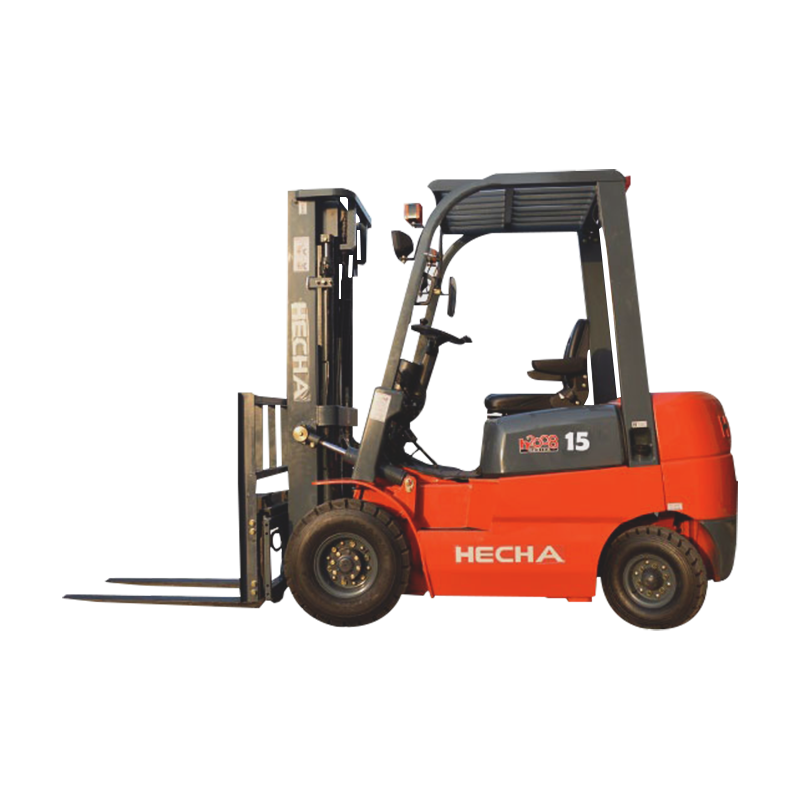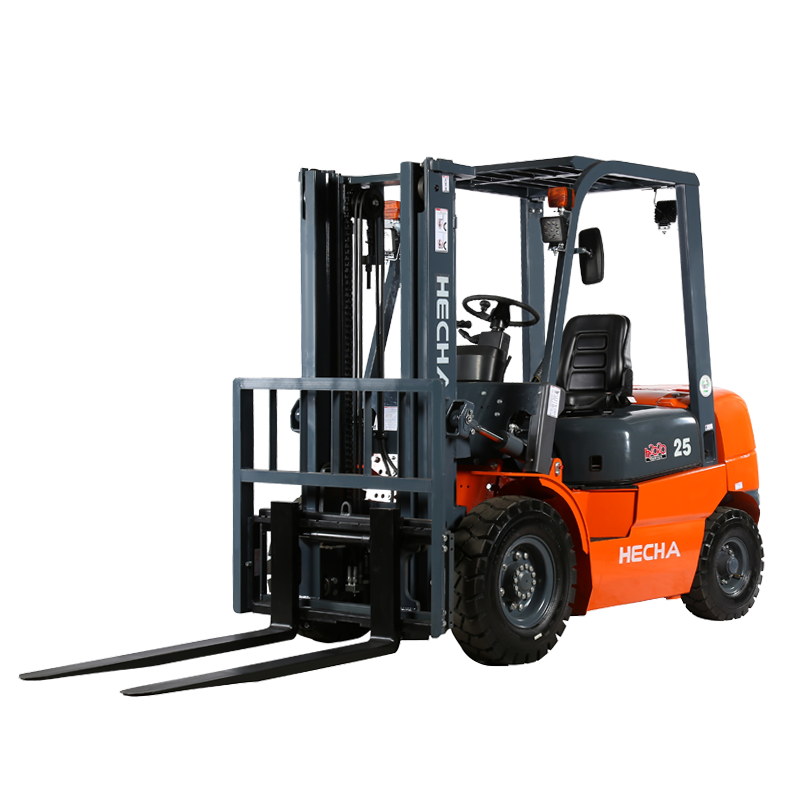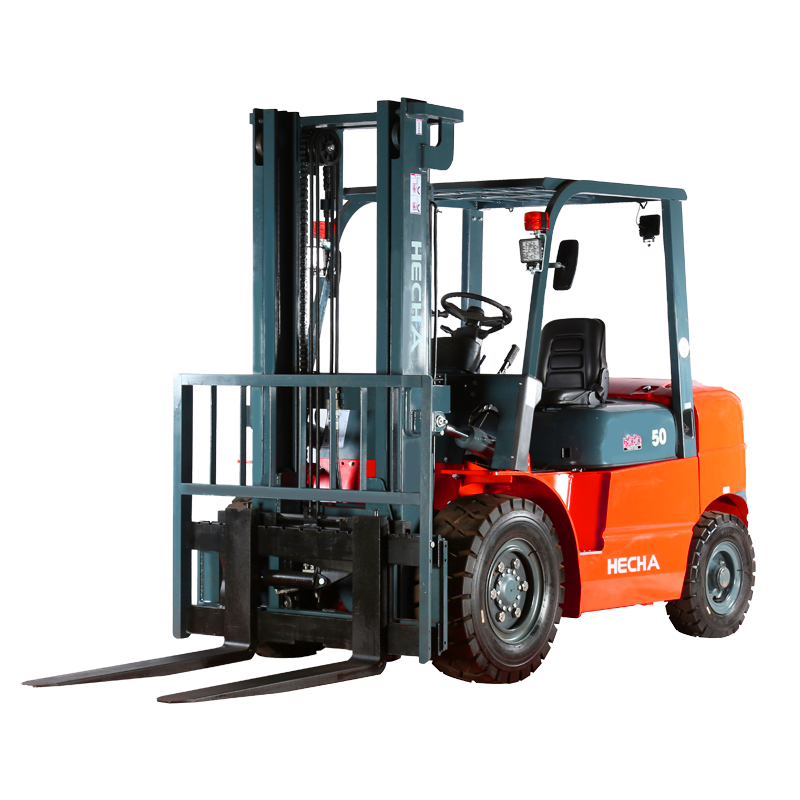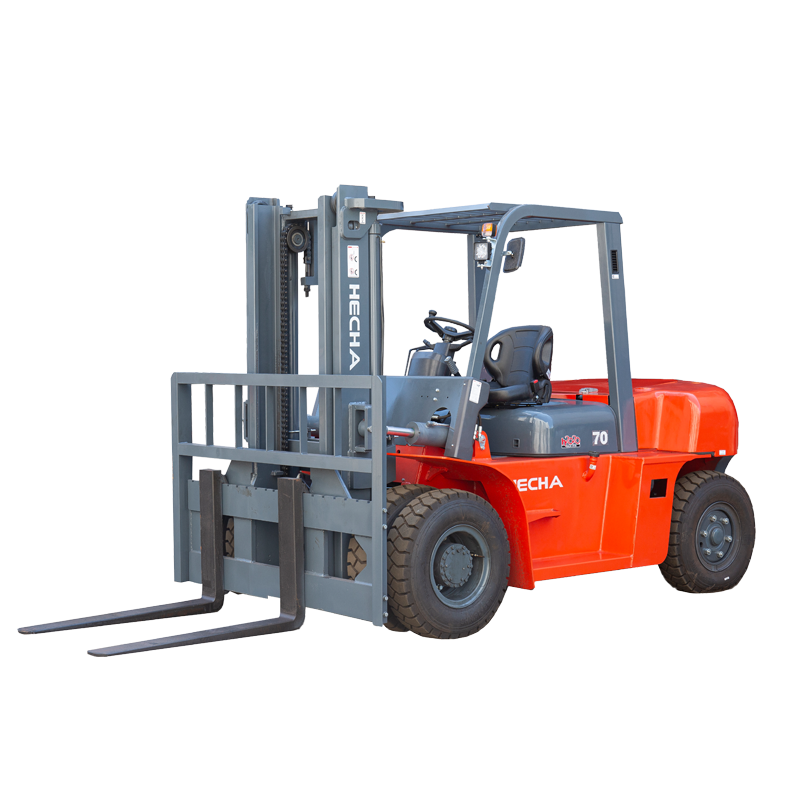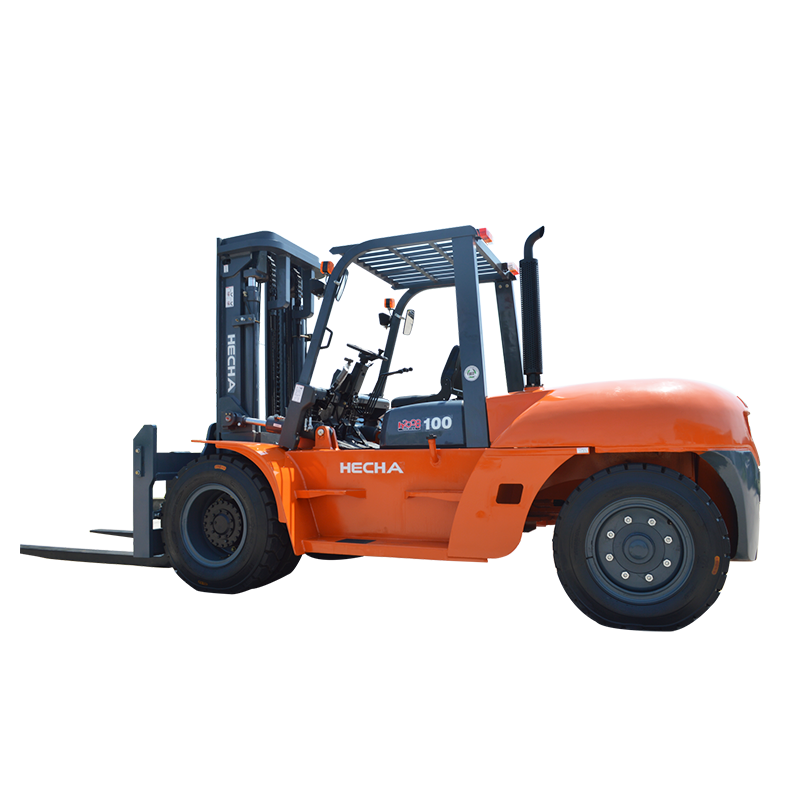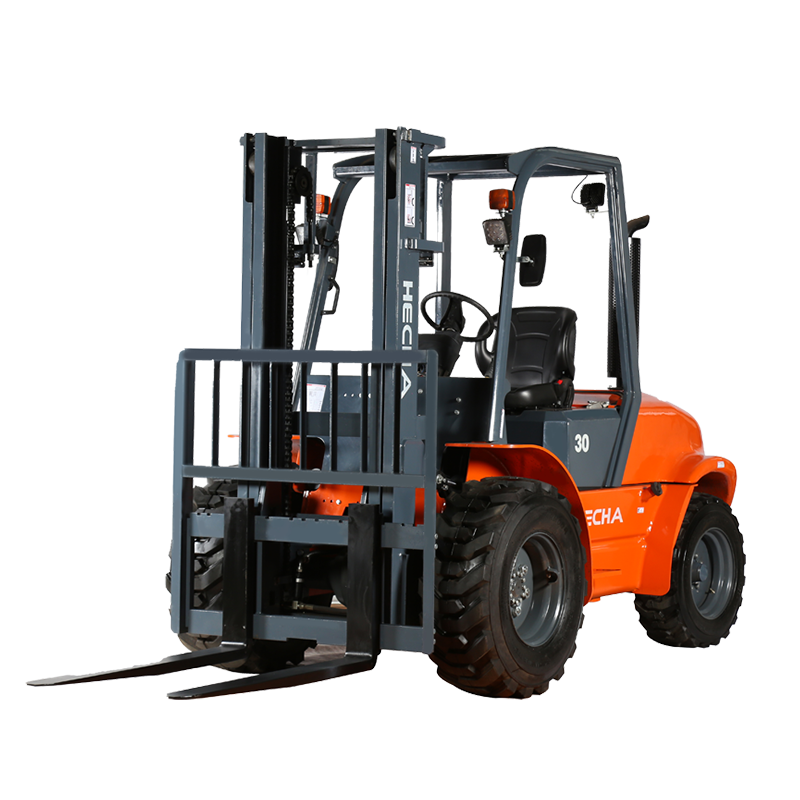The semi-electric stacker is a cornerstone of modern material handling, offering a perfect balance of manual maneuverability and powered lifting. Its versatility allows it to serve in a myriad of environments, from dense retail stockrooms to expansive warehouse aisles. However, the core functionality of any semi-electric stacker is not solely defined by its motor or battery; it is fundamentally determined by the interface that physically engages with the load: the forks. Selecting the appropriate fork type is not a mere accessory choice but a critical decision that directly impacts safety, efficiency, and application suitability. An incorrect fork choice can render an otherwise capable machine ineffective or, worse, create a hazardous operating condition.
The Fundamental Role of Forks in Semi-electric Stacker Operation
Before delving into the specific types, it is crucial to understand the core function forks perform. On a semi-electric stacker, the forks are the components that are inserted into the pallet’s entry points (typically the bottom stringer or block openings) to support the load during lifting, transporting, and stacking. They are the direct point of contact and stress transfer between the machine and the cargo. The design, dimensions, and construction of the forks must therefore be meticulously matched to the intended load characteristics.
The primary considerations for any set of forks are load capacity, dimensions, and material. The fork’s capacity must always meet or exceed the rated capacity of the semi-electric stacker itself. Their length must be sufficient to adequately support the load without being so long as to create instability or hinder maneuverability in tight spaces. The width between the forks, often adjustable, must correspond to the pallet’s design to ensure even weight distribution. Furthermore, forks are typically constructed from high-tensile strength steel, often heat-treated, to provide the necessary durability and resistance to bending under load without adding excessive weight to the machine. Choosing the right fork is a fundamental aspect of semi-electric stacker safety, ensuring stable load handling and preventing catastrophic failures.
Standard Straight Forks: The Universal Workhorse
The most common and widely recognized fork type is the standard straight fork. These forks are characterized by their simple, linear design from the heel (the end that attaches to the carriage) to the tip. They are the default attachment supplied with most semi-electric stacker units and are designed to handle the vast majority of common palletized loads.
The primary advantage of standard straight forks is their unparalleled versatility. They are engineered to work efficiently with the most common pallet types, including stringer pallets and block pallets, provided the pallet openings are clear and accessible. Their straightforward design makes them robust and relatively inexpensive to manufacture and replace. For operations that primarily deal with uniform, undamaged pallets carrying stable loads like boxes, drums, or sacks, standard forks are almost always the correct and most cost-effective choice. They represent the baseline against which all other specialized forks are measured.
However, the limitations of standard forks become apparent when faced with non-standard or challenging load scenarios. Their straight, often tapered, tips can have difficulty engaging with pallets that are positioned flush against a wall or nestled tightly within a stack. Furthermore, they offer no inherent mechanism for securing a load beyond the friction between the fork and the pallet wood, making them less ideal for handling unstable or unusually shaped items without additional securing measures.
Tapered Forks: Enhancing Maneuverability and Access
Tapered forks are a subtle yet highly effective variation of the standard straight fork. While the overall structure remains linear, the key differentiator is the design of the fork tip. Tapered forks feature a more pronounced and gradual narrowing towards the end, culminating in a much thinner and finer point compared to standard forks.
The defining benefit of this design is significantly improved ease of entry into pallet openings. The finer tip can more easily find and slide into pallet entry points that might be slightly misaligned, warped, or packed tightly together. This reduces the time and effort required for the operator to position the semi-electric stacker for pickup, thereby enhancing operational efficiency and reducing operator frustration. This feature is particularly valuable in high-density storage environments where pallets are placed with minimal clearance between them.
It is important to note that while the tips are finer, the main body of the fork retains its full thickness and load-bearing capacity. The tapering is a precision engineering feature focused on the entry point only. For operations that handle a large volume of pallet movements daily, especially with wood pallets that can swell or become slightly damaged over time, specifying a semi-electric stacker with tapered forks can lead to meaningful gains in productivity and smoother workflow.
Hook-Type Forks: Securing Unstable and Non-Palletized Loads
For applications that extend beyond standard pallets, hook-type forks, also known as drum handlers or coil forks, are an indispensable attachment. These forks deviate dramatically from the straight design. They feature a pronounced upward curve or hook at the tip, designed to cradle and secure cylindrical or otherwise unstable loads.
The core function of hook-type forks is to provide containment and prevent loads from rolling or sliding off the forks during transit. The most classic application is for the transportation of metal or plastic drums, whether they are standing upright or lying on their side. The hook wraps around the drum’s chime or body, locking it in place securely without the need for straps or other external restraints. This makes the semi-electric stacker a safe and efficient tool for handling liquids, powders, or granular materials stored in barrels.
Beyond drums, these forks are exceptionally useful for handling large coils of wire, paper, or sheet metal. The curved profile conforms to the shape of the coil, providing a large contact area and stable support. They can also be used for lifting heavy pipes or tires. When considering a semi-electric stacker for a manufacturing plant, foundry, or chemical storage facility, hook-type forks are often a necessary specialization to handle the unique loads common in those industries safely.
Telescopic Forks: Adapting to Variable Load Sizes
A significant limitation of fixed-length forks is their inability to adapt to loads of dramatically different sizes. Using very long forks for a short pallet is inefficient and can be dangerous, as the extended tips pose a collision hazard. Telescopic forks solve this problem by offering adjustable length.
These forks consist of two main sections: a base fork that attaches to the carriage and a movable extension that can slide out to effectively lengthen the fork. A locking mechanism, often hydraulic or manual, secures the extension at the desired length. This design provides unparalleled flexibility, allowing a single semi-electric stacker to safely handle a wide range of pallet and load sizes.
The advantages are numerous. For a warehouse that receives goods on both standard (48" x 40") and euro (31.5" x 47") pallets, as well as larger custom pallets, telescopic forks eliminate the need for multiple machines or fork changes. They allow the operator to use the minimum necessary fork length for each task, improving maneuverability and safety in confined spaces. Furthermore, when retracted, the machine has a shorter overall length, making it easier to store when not in use. The trade-off is typically a slight increase in initial cost and weight, and the mechanical complexity of the telescoping mechanism requires periodic inspection to ensure the locking feature remains secure.
Quad Forks: Handling Two Pallets Simultaneously
In high-volume shipping and receiving areas, efficiency is measured in movements per hour. Quad forks, also known as duplex or double pallet handlers, are a specialized attachment designed to double the productivity of a single cycle. Instead of a single pair of forks, this setup consists of two separate pairs of forks mounted on the same carriage. One set is fixed in position, while the other set is capable of moving laterally, typically through a hydraulic mechanism.
The primary purpose of quad forks is to enable a semi-electric stacker to pick up, transport, and stack two standard pallets side-by-side in a single operation. This is a significant efficiency booster for operations that involve moving large volumes of identical or similar products from a production line to a staging area or within a cross-docking facility. It reduces travel time, energy consumption, and operator workload by half for these specific tasks.
It is a highly application-specific solution. The semi-electric stacker must have the necessary hydraulic capabilities to control the moving fork set, and the loads must be of compatible size and weight to be handled in pairs. The warehouse aisles and storage racks must also be wide enough to accommodate the wider load profile. For the right environment, however, such as a beverage distributor or a large-scale retail distribution center, the productivity gains from implementing a semi-electric stacker equipped with quad forks can be substantial.
Cantilever Forks: For Solid-Surface Handling
Not all loads are placed on pallets. Many industries use heavy, flat-bottomed items like industrial totes, bins, or large metal containers that rest on a solid surface. Standard forks cannot be inserted underneath these items. Cantilever forks, also called blade forks or skid forks, are designed specifically for this purpose.
These forks have a distinct L-shaped or sometimes J-shaped profile. The vertical part of the “L” is a tall, thin blade, while the horizontal part forms the lifting arm. To use them, the operator positions the blades against the front face of the load. The machine then moves forward gently, and the mast is tilted backward. This action uses the leverage of the lifting arm to pry the load up and onto the blades, tilting it back onto the horizontal arms for transport. This allows the semi-electric stacker to lift and move loads that lack any ground clearance for standard fork entry.
Cantilever forks are essential in industries like textiles (for large rolls), printing (for paper skids), and metalworking (for die blocks). They transform the semi-electric stacker into a versatile tool for handling non-palletized unit loads. Critical considerations include ensuring the load’s bottom surface is strong enough to be supported at the edges by the blades and that the load itself is stable enough to be tilted back without shifting.
Key Selection Criteria: Choosing the Right Fork for Your Application
Selecting the appropriate fork type is a systematic process that must align with the specific operational requirements. The choice should not be based on cost alone but on a thorough analysis of the following criteria.
Load Characteristics: This is the most critical factor. What are you lifting? Analyze the load’s type (boxes, drums, coils), weight, dimensions, stability, and how it is presented (on a pallet, on a skid, or directly on the floor). The load’s physical properties dictate the necessary fork design.
Pallet Type: The condition and design of the pallets used in your facility are paramount. Consider the pallet’s entry height, the condition of the stringers or blocks (e.g., are they often damaged?), and the clearance between the pallet and the ground. Tapered forks are advantageous for difficult pallets, while standard forks suffice for new, uniform ones.
Operational Environment: The layout of your workspace directly influences fork selection. Consider aisle width, storage rack configurations, and the need for maneuverability. Telescopic forks are beneficial in tight spaces, while standard-length forks are fine in open areas.
Safety and Efficiency Requirements: Evaluate the need for load security. Hook-type or cantilever forks provide inherent stabilization for unstable loads, reducing the risk of accidents and the time spent applying straps or other restraints.
The following table provides a concise summary to aid in the preliminary selection process:
| Fork Type | Primary Use Case | Key Advantage | Key Consideration |
|---|---|---|---|
| Standard Straight | General pallet handling | Versatility and cost-effectiveness | Difficult with tight or damaged pallets |
| Tapered | High-volume pallet handling | Easy entry into tight pallet openings | Slightly higher cost than standard |
| Hook-Type | Drums, coils, cylindrical loads | Secures unstable loads without straps | Very specific application focus |
| Telescopic | Variable pallet/load sizes | Flexibility to adjust length as needed | Higher initial cost and mechanical complexity |
| Quad Forks | High-volume, identical pallets | Ability to move two pallets simultaneously | Requires wide aisles and compatible loads |
| Cantilever | Skids, non-palletized loads | Lifts loads with no ground clearance | Requires a stable load that can be tilted |
Maintenance and Safety Considerations for All Fork Types
Regardless of the fork type selected, rigorous maintenance and safety protocols are non-negotiable. Forks are critical safety components, and their failure can have severe consequences.
Regular inspection is mandatory. Operators should perform a visual check before each shift, looking for signs of wear, cracks, excessive wear on the fork heels (where they attach to the carriage), and bending. Even a slight bend can misalign the load and destabilize the semi-electric stacker. Any fork with a crack or a bend exceeding manufacturer specifications must be immediately taken out of service and replaced. They should never be straightened by heating or hammering, as this compromises the structural integrity of the metal.
Proper use is equally important. Forks must never be overloaded beyond their rated capacity or the capacity of the semi-electric stacker. The load must be centered on the forks as much as possible, and the forks should be adjusted to the correct width for the pallet to ensure even weight distribution. Operators must avoid using the forks as a lever to pry or move objects, as this creates point stresses for which they are not designed. Adherence to these semi-electric stacker safety principles ensures the longevity of the equipment and, most importantly, the well-being of personnel in the operating area.

 English
English 中文简体
中文简体 русский
русский Français
Français Español
Español

